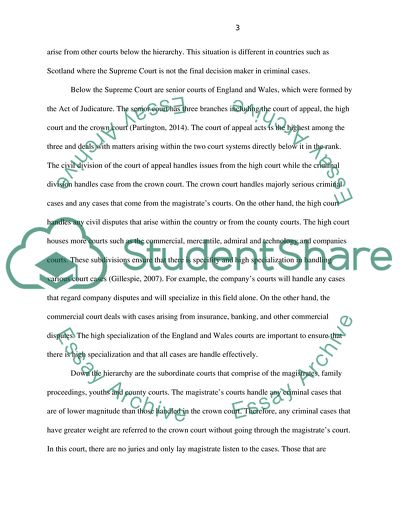Cite this document
(The Structure of the Court System in England and Wales Report - 7, n.d.)
The Structure of the Court System in England and Wales Report - 7. https://studentshare.org/law/1865769-assess-the-hierarchical-structure-of-the-court-system-in-england-and-wales-to-what-extend-does-the-common-law-doctrine-of-binding-precedent-engage-with-this-structure
The Structure of the Court System in England and Wales Report - 7. https://studentshare.org/law/1865769-assess-the-hierarchical-structure-of-the-court-system-in-england-and-wales-to-what-extend-does-the-common-law-doctrine-of-binding-precedent-engage-with-this-structure
(The Structure of the Court System in England and Wales Report - 7)
The Structure of the Court System in England and Wales Report - 7. https://studentshare.org/law/1865769-assess-the-hierarchical-structure-of-the-court-system-in-england-and-wales-to-what-extend-does-the-common-law-doctrine-of-binding-precedent-engage-with-this-structure.
The Structure of the Court System in England and Wales Report - 7. https://studentshare.org/law/1865769-assess-the-hierarchical-structure-of-the-court-system-in-england-and-wales-to-what-extend-does-the-common-law-doctrine-of-binding-precedent-engage-with-this-structure.
“The Structure of the Court System in England and Wales Report - 7”. https://studentshare.org/law/1865769-assess-the-hierarchical-structure-of-the-court-system-in-england-and-wales-to-what-extend-does-the-common-law-doctrine-of-binding-precedent-engage-with-this-structure.


